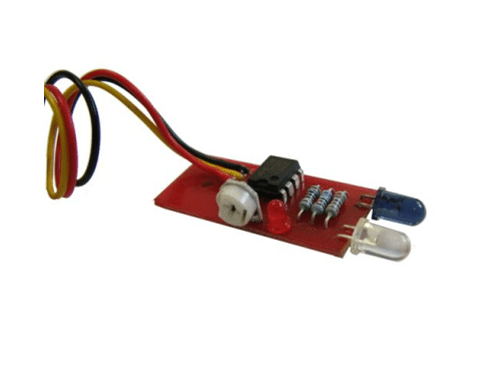Predictive maintenance techniques are getting ready to develop beyond human-assisted inspection and correction, into self-maintaining and eventually self-sufficient machines. Industry 3.0 brought information technology into automation, now industry 4.0 is set to take technology further to leverage advantages from things like Big Data, virtualization, cloud and the IoT(Internet of Things).
For manufacturing the IoT is going to be one of the main driving forces behind predictive maintenance. By utilizing increasingly inexpensive IoT sensors, futuristic smart factories are on the cusp of being born. Although not the only exciting new technology in progressively complex predictive analytics and maintenance systems, it is a critical component for most of these emerging technologies. Below I will detail these indispensable technologies that will eventually come together and emerge as a solution for not only predictive maintenance, but entirely self-sufficient machines as a whole ( I, for one, welcome our new robot overlords).
The Physical Sensors
First things first: the machine monitoring technologies. After all, how can we develop predictive maintenance for a system without any information on its actual, physical condition? For manufacturing, sensors in machines utilize a wide range of technologies. I’ll be showcasing 2 prominent IoT sensors with examples of how they analyze physical systems. The two are: infrared thermal sensors and vibration sensors.
Infrared sensing

What they can sense: By monitoring temperature changes and fluctuation one can gather information on a systems physical status, such as: Temperature changes due to increased friction from improper lubrication, faulty electrical connections giving rise to thermal runoff, thermal leakage from things like boilers, rooftops, poorly insulated walls, etc.
Real-word Examples (taken from O&M best practices guide):
This picture and corresponding graph shows how software analysis tools can quantify and graphically display temperature data for easier analysis. As shown above, the middle conductor/connection is a much higher temperature than the others, clearly indicating a loose connection
Vibration Sensing
What they can sense: By monitoring the vibrations and frequencies we can predict the condition of things like motors, planetary gears, ball bearings, ball screws etc.
Real-word examples: This one is much harder to display in a photograph, so instead I’ll demonstrate a graph that shows what a vibration/frequency profile looks like.
With these frequency/vibration profiles, companies can compare their components current IoT sensor data and derive information on the degradation of the component.
Scores of other sensor types
There are a countless number of different types of sensors: acoustic sensors, electromagnetic, distance/proximity, humidity, chemical, accelerometer and pressure to name a few. Individually all this sensor information won’t be very usable, and that’s where the next step comes in- transporting and storing the information for further use.
The Network
These small but innumerable IoT sensors require a flexible, rock-solid network so they can constantly send out the physical condition data. Be it wired or wireless, next-generation network infrastructure is required to gather all the sensor data and store it in a usable state. Given the size and quantity of these components, not to mention the cost of physically cabling it all, for pretty much all cases wireless is the most viable option.
Predictive Maintenance & Analytics
Now that we have all of this useful information on our machines, we need to contextualize and turn all the unreadable (by human standards) sensor data into readable and applicable information. This computationally expensive task is reserved for capable cloud networks. By employing learning algorithms on large data-sets (this technique is known as big data), virtualized simulations of physical systems and previous findings, companies can discover patterns, potential problems and their root causes before component failure.
Where we are heading
CPS – Cyber-Physical systems. These systems exist not only in the physical realm (for example a copying machine), but in the software plane (i.e. smartphone app controlled copying machine). In smart factories, they’ll take on incredibly complex forms, like the cyber-twin model. The cyber-twin model takes an existing piece of hardware and creates an identical virtual simulation that runs alongside the hardware at all times. This virtual copy is useful for running simulations which can predict component wear patterns and failures. Using this data companies can raise efficiency, production and automation to new heights.
What’s currently holding us back?
Battery technology: Considering the places where IoT sensors will be placed, and the sheer number of them, it’s not viable to implement cabling to power them all. It’s been known for a long time that battery technology has a long ways to go before catching up with other aspects of technology.
Now imagine having hundreds- even thousands of these sensors- all running on batteries. It’s a nightmare anyway you look at it, high-capacity non-rechargeable batteries don’t get close to the life-cycle of an IoT sensor(good luck swapping 100’s of batteries out). The best rechargeable battery tech available, Li-ion, only lasts ~500 cycles and needs additional charging circuits. Even so, companies are coming up with awesome solutions for this pressing problem.
Emerging solutions
Energy harvesting technologies. Given the location of some of these IoT sensors, there are alternative and better means from which to draw power. Thermoelectric is the biggest, with solar and photo-voltaic technologies a close seconds. By combining these energy harvesting technologies with super capacitors that have no charge-cycle limit, self-sustaining IoT devices can become a reality and push predictive maintenance to the next level, inching us ever-closer to Industry 4.0.